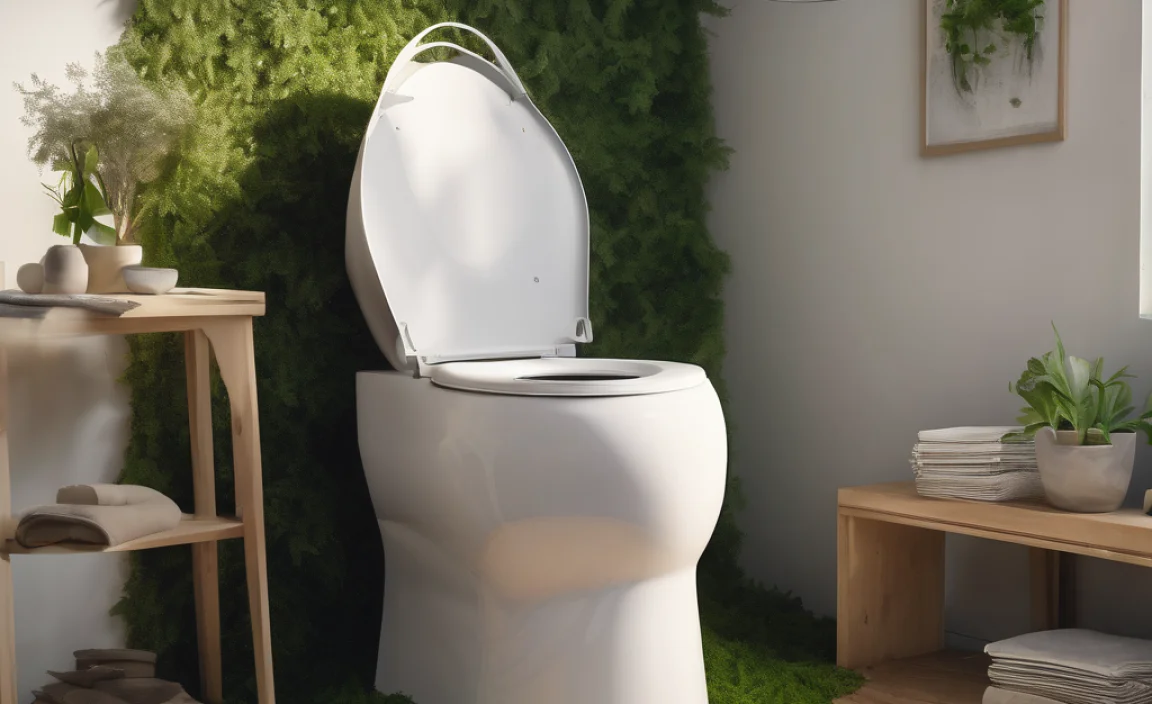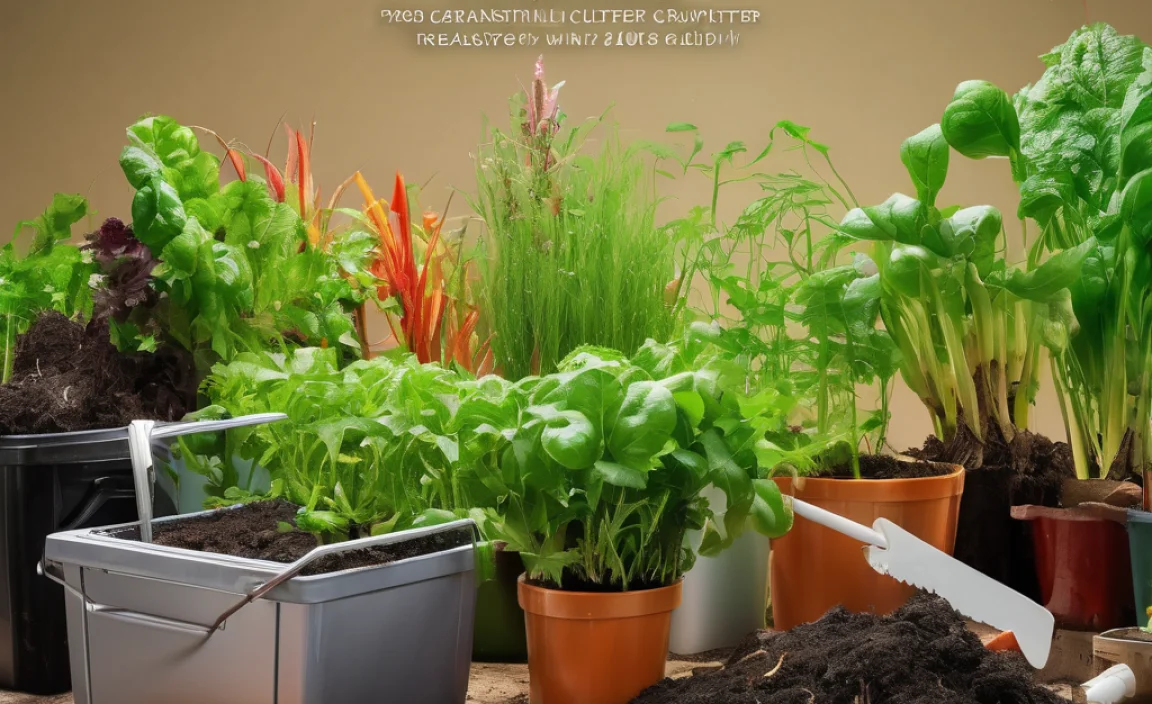Hey there, fellow DIY enthusiasts and garden lovers! Troy here from TopChooser. Ever tossed some food scraps into your compost bin, only to end up with a stinky mess instead of rich, black gold? You’re not alone! Home composting can be super rewarding, but sometimes, things don’t go as planned. It can be frustrating when you’re trying to do good for the planet and your garden, and all you get is a smelly situation. But don’t worry! Today, we’re going to tackle those common home composting problems head-on. Get ready for some simple, practical solutions that’ll get your compost heap humming along nicely. Let’s dig in!
Home Composting Problems: Essential Solutions
Composting is an amazing way to reduce waste and create free, nutrient-rich fertilizer for your garden. It’s a win-win for you and the environment! However, like any DIY project, there can be a few hiccups along the way. When things go wrong, it’s easy to get discouraged. But the good news is, most composting problems have straightforward fixes. We’ll break down the most common issues and give you the know-how to solve them. Think of this as your friendly guide to a happy compost bin!
Why Does My Compost Stink? The Dreaded Smells of Composting
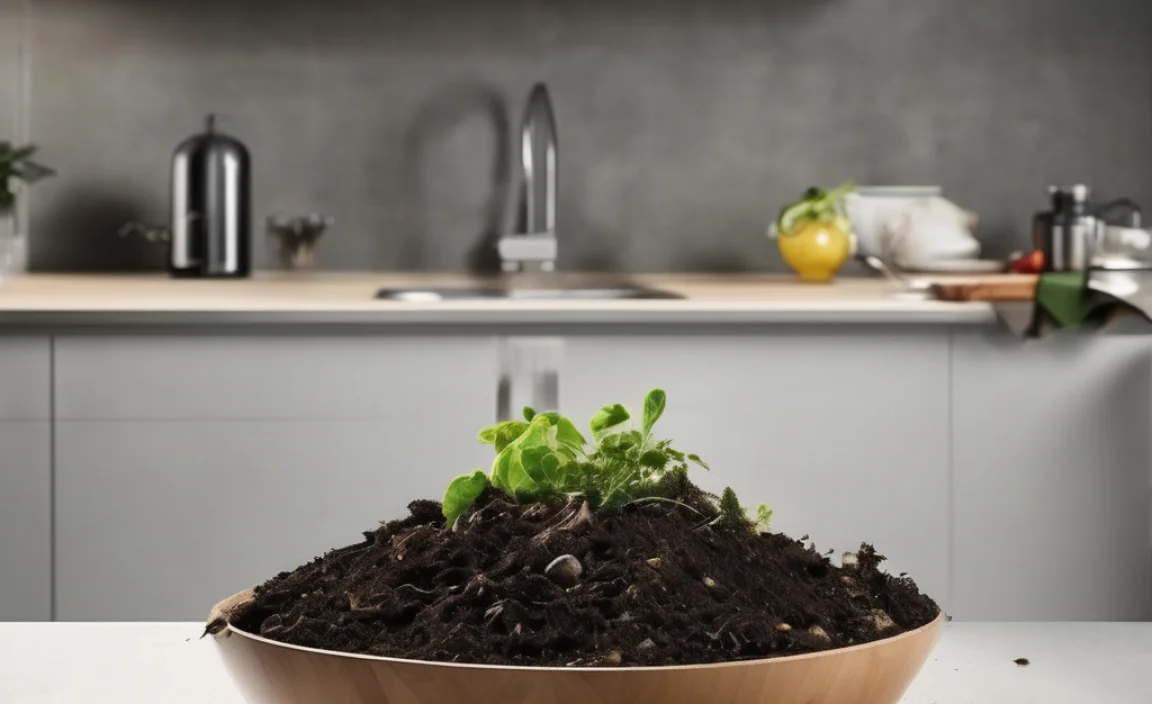
This is probably the most common complaint from beginner composters. A healthy compost pile should smell earthy, like rich soil. If yours smells like rotten eggs, ammonia, or just plain foul, something is off. Usually, these bad smells are a sign of anaerobic conditions, meaning there isn’t enough air getting into the pile.
Problem 1: The Rotten Egg/Sulfur Smell
This pungent odor is often caused by too much moisture and not enough air circulation. When organic matter breaks down without oxygen (anaerobic decomposition), it produces gases like hydrogen sulfide. It’s a sure sign your compost is too wet and compacted.
Solutions for Rotten Egg Smell:
- Aerate Your Pile: The most effective solution is to turn your compost pile. Use a pitchfork or compost aerator to fluff it up. Make sure to mix the wetter, compacted material with drier, looser material. Aim to turn it at least once a week, especially if it’s smelling bad.
- Add Carbon-Rich Materials (“Browns”): If your pile is too wet, it likely has too many nitrogen-rich materials (“greens”). Balance it out by adding dry, carbon-rich materials like shredded cardboard, dried leaves, straw, or sawdust. These materials will help absorb excess moisture and provide air pockets.
- Check Drainage: Ensure your compost bin isn’t sitting in a puddle or has standing water inside. If you’re using a bin with a solid bottom, try elevating it slightly or drilling extra drainage holes. Good drainage is crucial for preventing overly wet conditions.
- Don’t Overcrowd: Stuffing too much into your bin can lead to compaction and poor airflow. Leave some space for air to move through the materials.
Problem 2: The Ammonia/Urine Smell
This sharp, pungent smell is usually a red flag that you have too many nitrogen-rich materials (greens) in your compost pile. Greens like grass clippings, vegetable scraps, and coffee grounds are great for composting, but an excess can release ammonia gas. It means the nitrogen isn’t being balanced out by carbon materials.
Solutions for Ammonia Smell:
- Add Carbon-Rich Materials (“Browns”): Just like with the rotten egg smell, adding dry, carbon-rich materials is key. Generously mix in shredded newspaper, cardboard, dried leaves, straw, or wood chips. These “browns” will absorb the excess nitrogen and help balance the C:N ratio.
- Turn Your Pile: Aeration helps the ammonia gas dissipate and allows for more balanced decomposition. Turning also helps distribute the nitrogenous materials among the carbon-rich ones.
- Avoid Fresh Manure (in excess): While manure can be a great compost ingredient, fresh manure is very high in nitrogen. If you’ve added a lot recently, be sure to balance it with plenty of browns.
Compost Pile Not Heating Up? The Cold, Indifferent Pile
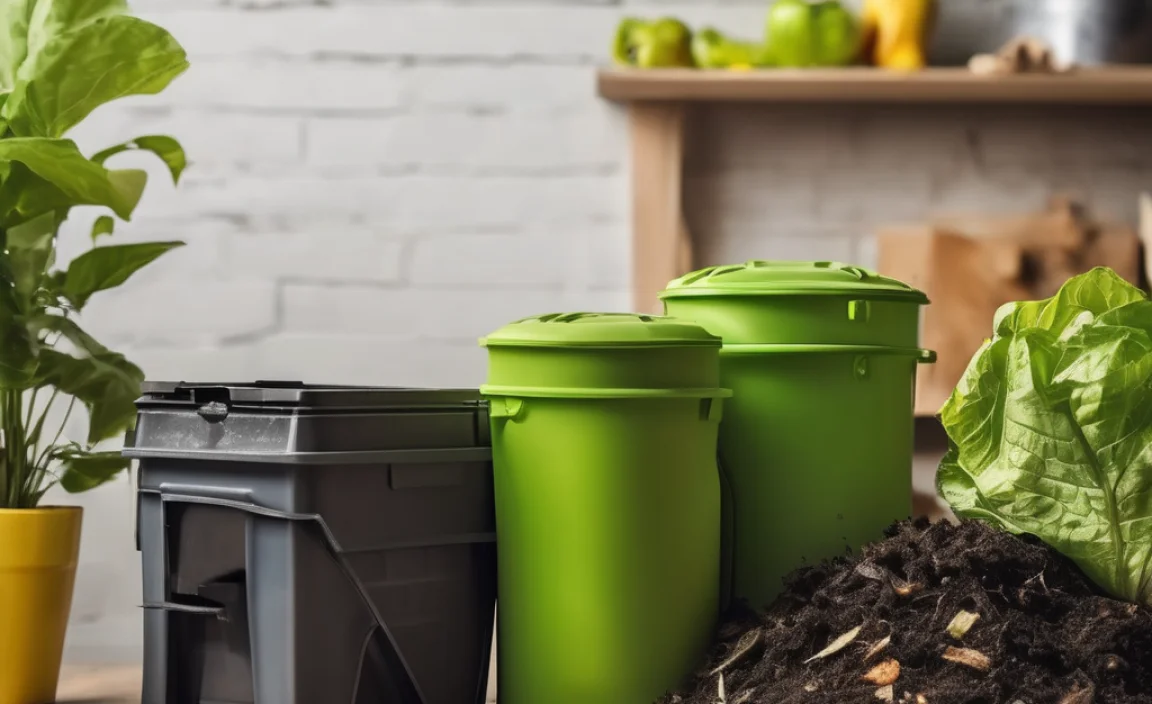
A “hot” compost pile, which reaches temperatures between 130-160°F (54-71°C), breaks down organic matter much faster. If your pile remains cool, decomposition will take much longer, and it might not kill weed seeds or pathogens. Here are the usual culprits:
Problem 3: The Pile is Too Small
For a compost pile to heat up effectively, it needs to be a certain size. This is because the mass of material traps heat generated by the microbial activity. A pile that’s too small simply loses too much heat to the surroundings.
Solutions for a Small Pile:
- Build it Bigger: Aim for a minimum size of at least 3 feet x 3 feet x 3 feet (1 cubic yard or about 1 cubic meter). If your current bin is too small, consider accumulating more materials for a larger pile or adding to your existing bin.
- Add More Material Gradually: Keep adding kitchen scraps and yard waste to your bin. As it grows, it will have a better chance of reaching critical mass for heating up.
Problem 4: The Imbalance of Greens and Browns
Composting is all about balance. You need a good mix of nitrogen-rich materials (greens) and carbon-rich materials (browns). Typically, a ratio of 25-30 parts carbon to 1 part nitrogen (by weight) is ideal for hot composting. Too many browns and not enough greens means there isn’t enough “fuel” for the microbes to generate heat. Too many greens without enough browns can lead to the stinky, wet pile we discussed earlier.
Solutions for Imbalance:
- Analyze Your Ingredients: Take note of what you’re adding. Are you mostly adding food scraps and grass clippings (greens)? Or is it mostly dry leaves and cardboard (browns)?
- Adjust Your Ratio: If your pile is too cold, you likely need more “greens.” Add more kitchen scraps, fresh grass clippings, or even a sprinkle of coffee grounds. If it’s already gotten stinky, you might have too many greens, so add lots of “browns” to balance and aerate.
- Use a Handy Chart: A simple visual guide can help. Generally, fresh, green materials are G(reens) and dry, brown materials are B(rowns).
| Material Type | Examples | Role in Compost |
|---|---|---|
| Greens (Nitrogen-rich) | Fruit & Vegetable Scraps, Coffee Grounds, Tea Bags, Grass Clippings, Fresh Plant Matter | Provide nitrogen for microbial growth, help generate heat. |
| Browns (Carbon-rich) | Dry Leaves, Shredded Cardboard/Newspaper, Straw, Sawdust, Twigs | Provide carbon for energy, add bulk, improve aeration, absorb excess moisture. |
Problem 5: Pile is Too Dry
Microorganisms need moisture to do their work. If your compost pile is too dry, the decomposition process will slow down dramatically or stop altogether. It might feel dusty and crumbly, with little to no heat being generated.
Solutions for a Dry Pile:
- Add Water: The simplest solution is to add water. Use a hose with a spray nozzle or a watering can to moisten the materials. Aim for the consistency of a damp, wrung-out sponge – not dripping wet, but definitely not dry.
- Mix in Wet Materials: If possible, mix in some wetter “green” materials like fresh kitchen scraps or grass clippings.
- Cover Your Pile: If your compost pile is consistently drying out due to sun or wind, consider covering it with a tarp, a layer of straw, or using a compost bin with a lid. This helps retain moisture.
- Turn the Pile: When you water, turn the pile to ensure the moisture penetrates evenly.
Compost Pests? Unwelcome Critters in Your Compost Bin
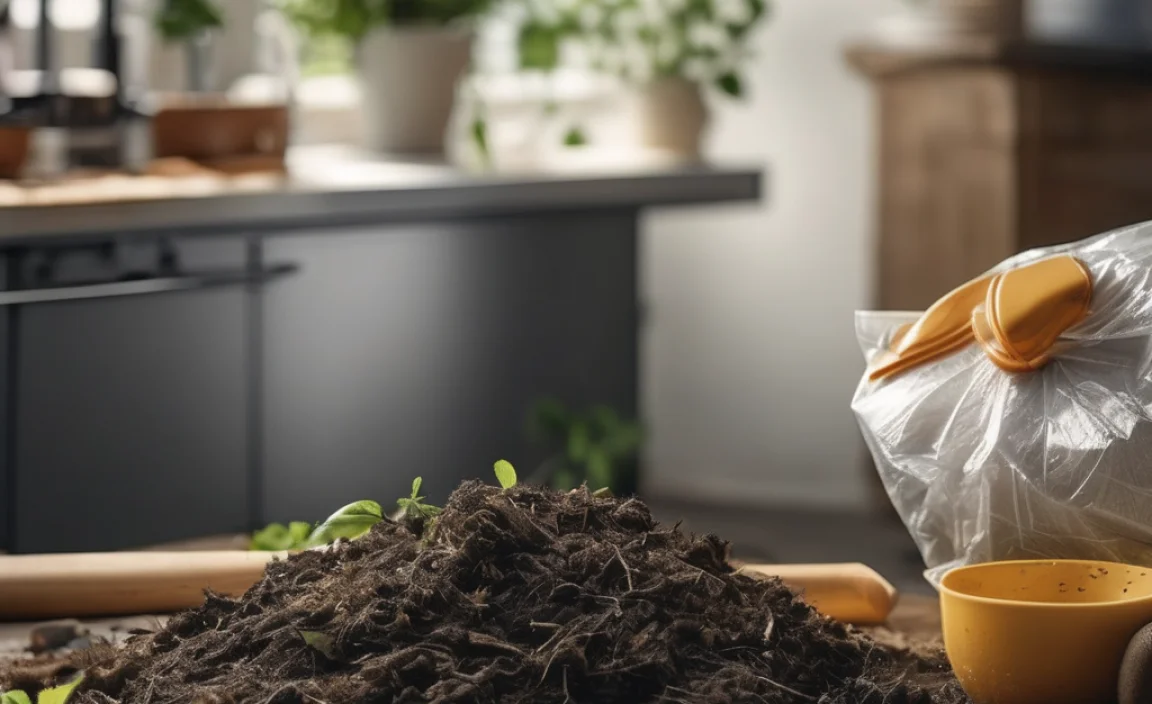
Nobody wants rodents or bothersome insects investigating their compost pile. While some insects are beneficial decomposers, others can be a nuisance.
Problem 6: Rodents (Rats, Mice)
This is a concern for many, especially if you’re adding food scraps. Rodents are attracted to the easy food source. However, with the right approach, you can compost food scraps without attracting unwanted guests.
Solutions for Rodents:
- Use a Rodent-Proof Bin: Consider a compost bin with a sturdy lid and a solid bottom. Wire mesh enclosures (like homemade bins or tumblers) should have mesh smaller than 1/2 inch to prevent entry. A good option is a fully enclosed plastic compost bin. You can find many reliable options at reputable garden supply stores or check reviews on sites like Garden Design for ideas.
- Bury Food Scraps: Always bury fresh kitchen scraps deep within the pile, covering them with a thick layer of “browns” (like leaves or shredded paper). This makes them less accessible and less attractive to surface-seeking critters.
- Avoid Meat, Dairy, and Oily Foods: These items are particularly attractive to rodents and can cause smells that draw them in. Stick to fruit and vegetable scraps, coffee grounds, tea bags, and yard waste.
- Maintain Proper Conditions: A well-managed compost pile that heats up properly is less likely to attract rodents because the heat can deter them, and the material breaks down quickly into less recognizable food.
Problem 7: Fruit Flies and Other Annoying Insects
A few fruit flies or gnats are common and usually harmless, as they are part of the decomposition process. However, if they become a swarm, it can be a nuisance.
Solutions for Annoying Insects:
- Bury Scraps: Again, burying fresh food scraps under a layer of “browns” is the best defense. This covers the attractive food source and helps contain the flies.
- Cover the Pile: A lid or a good layer of covering material will help prevent flies from getting to the surface material.
- Balance Your Pile: Overly wet or anaerobic conditions can attract more flies. Ensure good aeration and the right moisture level.
- Let it Heat Up: Hot composting kills off many insect eggs and larvae, reducing future populations.
Compost Not Breaking Down? The Slow Decomposition Dilemma
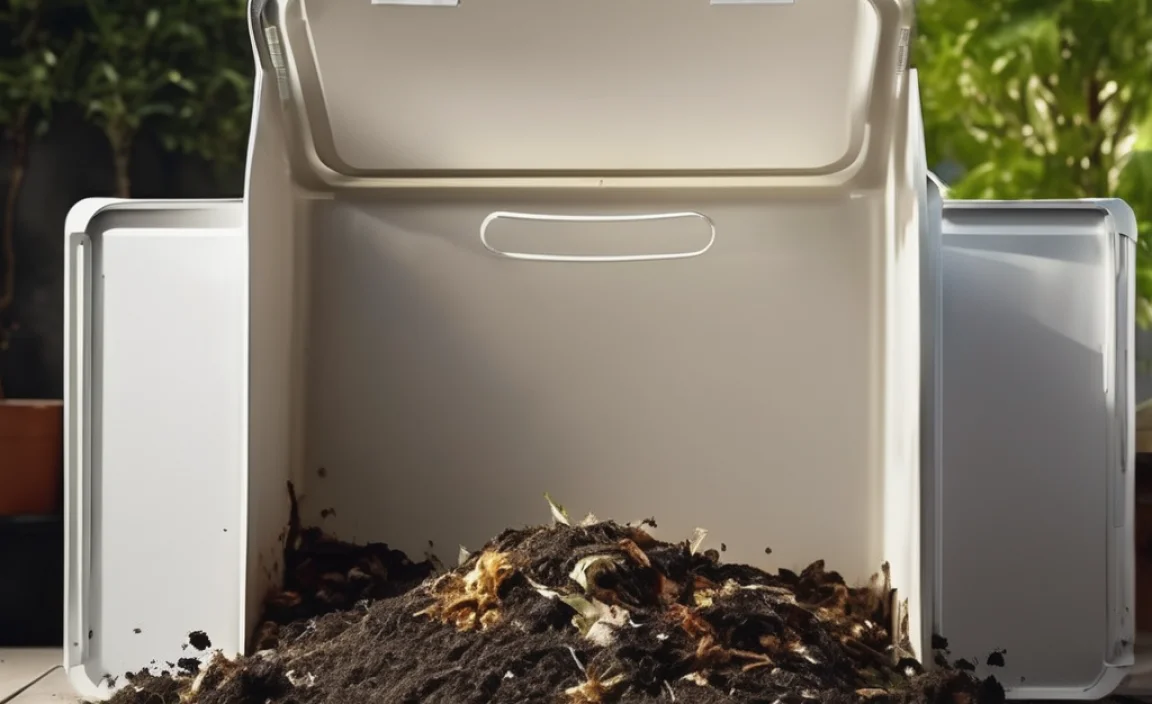
You’ve got a pile, you’ve added scraps, but nothing seems to be happening. Your compost looks the same as it did weeks or months ago. Patience is a virtue in composting, but if it’s stalled, there’s usually a reason.
Problem 8: Pile Lacks Nitrogen (“Greens”)
As we’ve touched upon, nitrogen is essential “fuel” for the microbes that break down organic matter. If you have too many “browns,” the microbes won’t have enough to work with, and the pile will be sluggish.
Solutions for Lack of Nitrogen:
- Add “Greens”: Introduce more nitrogen-rich materials like fresh grass clippings, kitchen scraps (fruit and veggie peels, coffee grounds), or even a balanced organic fertilizer if you’re really stuck.
- Turn the Pile: Mixing in the new greens will distribute them and encourage microbial activity.
Problem 9: Pile is Too Dry or Too Compacted
We’ve discussed dryness and compaction leading to smell, but it also directly impacts breakdown speed. Microbes need moisture to survive and multiply, and oxygen to breathe. If the pile is too dry or too tightly packed, they can’t function efficiently.
Solutions for Dryness/Compaction:
- Add Water and Turn: Moisten the materials thoroughly (to that damp sponge consistency) and then turn the pile to loosen it up and introduce air.
- Add Bulking Agents: If compaction is a persistent issue, consider adding materials that create air pockets, like small twigs, shredded cardboard, or straw, when you build your pile.
Problem 10: Materials are Too Large
Large items like whole fruits, large branches, or thick stalks take a lot longer to break down. The microbes can only work on the surface area exposed to them. Smaller pieces mean more surface area for the microbes to attack.
Solutions for Large Materials:
- Chop or Shred Materials: Take the time to chop up larger food scraps, stalks, and branches. Shredding cardboard and newspaper also helps. A compost tumbler can sometimes help break down materials faster if they are of reasonable size.
- Layer Appropriately: When building your pile, try to mix finer materials with coarser ones and layer them to avoid large clumps.
For more detailed information on composting science and best practices, resources like the U.S. Environmental Protection Agency (EPA) offer excellent guidance.
Common Composting Mistakes and How to Avoid Them
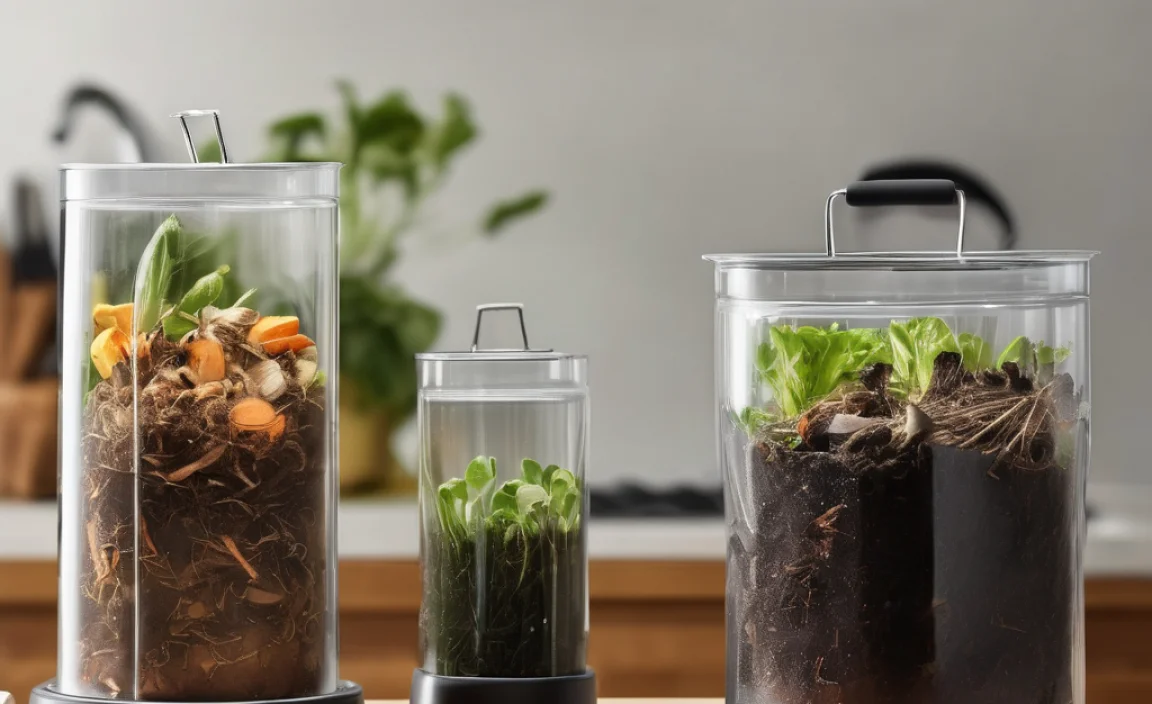
Sometimes, the simplest mistakes can cause the biggest headaches. Being aware of these can save you a lot of trouble and get you composting like a pro faster.
Mistake 1: Using the Wrong Materials
Not everything belongs in a home compost bin. As mentioned, meat, dairy, and oily foods can attract pests and cause odors. Diseased plants, weeds that have gone to seed, and pet waste (from cats and dogs) should also be avoided in typical home composting setups.
Solution: Stick to Approved Items
- Compost fruits and vegetables.
- Add coffee grounds and tea bags.
- Include yard waste like grass clippings and dry leaves.
- Shredded newspaper and plain cardboard are great.
- Eggshells are good too!
Mistake 2: Not Turning the Compost
Turning, or “aerating,” your compost pile is vital. It introduces oxygen, which is essential for the aerobic microbes that do the bulk of the work. Without turning, the pile can become anaerobic, leading to smells and slow decomposition.
Solution: Schedule Turning Time
- Aim to turn your pile at least once a week for fast composting, or once every couple of weeks for slower methods.
- Use a garden fork or a specialized compost aerator.
Mistake 3: Incorrect Moisture Levels
Too wet and you get anaerobic conditions and smells. Too dry and the microbes can’t work. Finding that sweet spot – like a damp, wrung-out sponge – is key.
Solution: Monitor and Adjust
- Feel the materials. If they’re dry, add water. If they’re dripping, add more browns and turn.
- Use a lid or cover to help regulate moisture if needed.
Mistake 4: Overloading the Bin
While a larger pile can heat up better, stuffing your bin so tightly that air can’t circulate is a recipe for disaster (usually smelly disaster!).
Solution: Give Your Pile Space
- Don’t pack materials in too tightly. Leave some air pockets.
- If your bin is consistently overflowing, consider starting a second bin.
Troubleshooting Table: Quick Fixes for Common Compost Problems
Sometimes, a quick reference is all you need. Here’s a handy table to help you diagnose and fix your composting woes on the fly.
| Problem | Cause | Solution |
|---|---|---|
| Bad Odor (Rotten Eggs) | Too wet, not enough air (anaerobic) |

I am passionate about home engineering. I specialize in designing, installing, and maintaining heating, ventilation, and air conditioning systems. My goal is to help people stay comfortable in their homes all year long.

